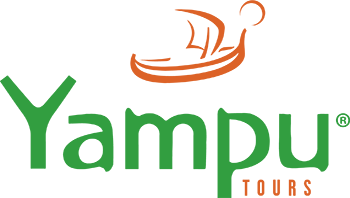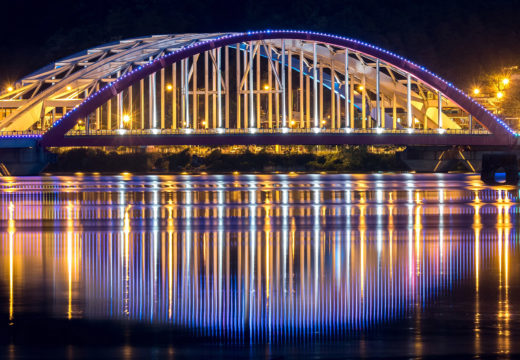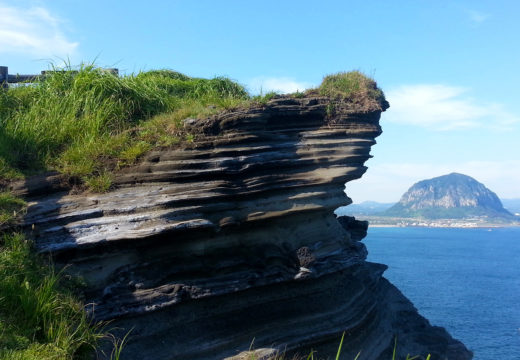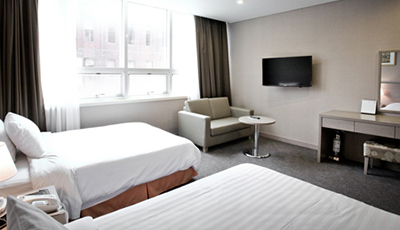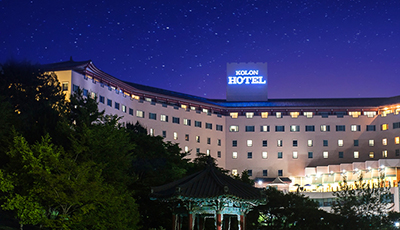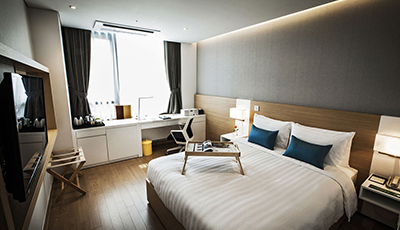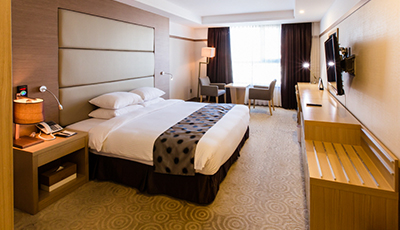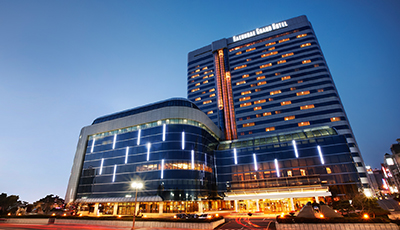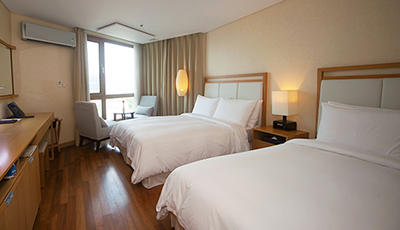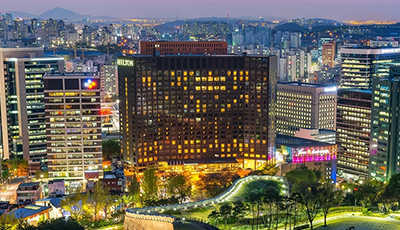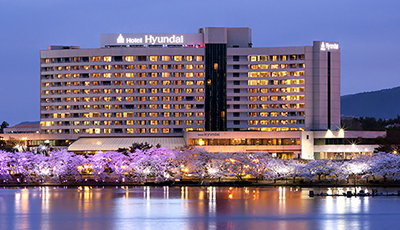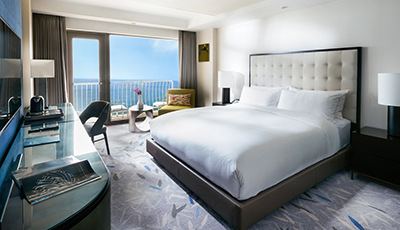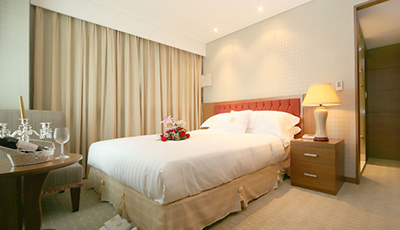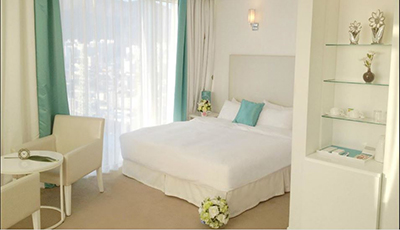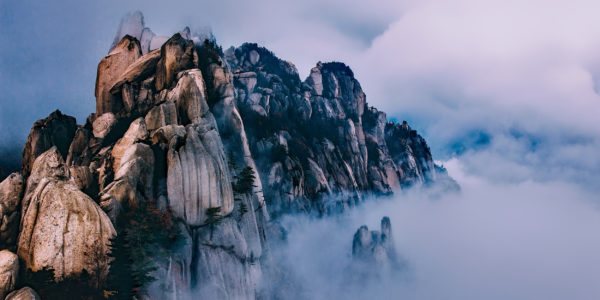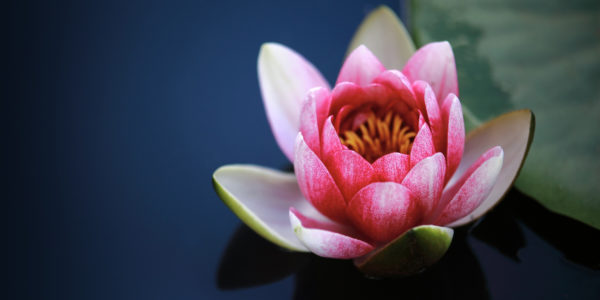Private Tour Highlights
- Explore the sites of Seoul with its contemporary style blending seamlessly with its historic past while shopping the unique markets throughout this emerging city
- Learn the processes of growing green tea and harvesting the delectable plant while visiting some of the regions most famous tea plantations
- Visit the Damyang Bamboo Fortress to learn about the many functions of bamboo and its beauty before testing one's skills at some of the various river sports that the Fortress offers!
- Explore the unique landscape of Jeju Island. Relax on the sandy beaches, hike the nearby Halla Mountain, and dine on some of the freshest seafood harvested by the local mermaids
- Learn why the Korean peninsula is home to a single nation of people with the same language and ethnicity, but divided in two with a stop at The Demilitarized Zone (DMZ)
Tour Overview
With Yampu’s Feel & Touch Korea tour one can go beyond simply seeing their destination, allowing travelers and explorers alike to reach out to their points of interest and experience beyond tourist traps and the beaten paths. Begin with an introduction to Korea at its capital, Seoul. Here visitors can get a good sense of Korea’s developments, modern culture, and customs along with the immense history that the city holds. To gather an understanding of the historic Korean conflict between South Korea and its neighbor to the north, Yampu Travelers can explore the demilitarized zone. This Buffer zone of sorts separates the two opposing nations with nearly 2 miles of land where military activity is forbidden. Traveling south, Yampu Travelers will be able to appreciate different traditional villages with their intricate architecture and complex palaces and gardens. Once in the port city of Busan, stop by the rare coastal temples of the area before heading off to Jeju Island. While on Jeju, explore both the East and West coasts of the island to gain a full experience of this unique landscape and its communities inspiring traditions. Continue back to the mainland to get a taste of how green tea leaves are grown and harvested while in the city of Boseong. Not too far from the plantation is the city of Damyang, home to over 800 traditional Korean ‘hanok’ houses. From here, transfer back to the bustling city of Seoul to spend a full day at leisure before the flight home the following morning.
Inclusions
Exclusions
International airfare (unless specifically included), airport departure taxes that must be paid on-site, gratuities, meals not mentioned, soft drinks and alcoholic beverages with meals, early / late check-out, room service, visa fees/services and other personal items or services not mentioned.
Package Price: From £$ 11585
Prices shown above are per person. Hotel categories do not adhere strictly to international ratings; Yampu has evaluated the hotels according to destination and availability. Prices include local airfare (where applicable), hotel accommodation including daily breakfast; all transfers with baggage handling, all guided tours in English and all entrance fees.
Please note that prices are subject to change based on availability and seasonality, especially during the holiday season from December 20th through January 5th each year. Please contact a Yampu Travel Specialist for more information on best times to travel.
Trip Type:
All our trips are operated on a private basis unless specified otherwise. This is only a sample itinerary; your Yampu Tour Consultant will personalize this trip for you according to your available dates, interests and type of hotels. This is your trip and we will work on making it perfect!
Tour Itinerary
Welcome to Seoul
Reception at airport and private transfer to this evening’s selected hotel. Note: Check in to the hotel is at 3 pm. Early check in may be available directly at the hotel subject to availability. One may store their luggage at the hotel until check in is available. Enjoy the remainder of the day at Leisure.
Reception at airport and private transfer to this evening’s selected hotel. Note: Check in to the hotel is at 3 pm. Early check in may be available directly at the hotel subject to availability. One may store their luggage at the hotel until check in is available. Enjoy the remainder of the day at Leisure.
Explore Seoul
Spend read more...
Spend the day touring Seoul and all it has to offer. Start at Gyeongbokgung Palace, also referred to as "Northern Palace". Built in 1395, it is arguably the most beautiful and the largest of the five palaces found in Seoul. Next, visit the Korean Folklore Museum before heading to Jogyesa Temple. Following the visit to Jogyesa Temple, head to the Presidential Offices for the chance to explore around the many unique buildings found there. Next, lunch will be enjoyed before moving on to the next destination.
Following lunch, head to the Ginseng Shopping Center and N Seoul Tower before reaching Namsan Hanok Village. This traditional Korean village consists of five restored traditional Korean houses, a pavilion and a pond, making it the perfect place to go for a stroll. The final stop is Namdaemun Market, where one can enjoy Koreas largest traditional market. From Namdaemun Market, transfer to city hall.
...read less
Tour of Korean Demilitarized Zone
Start read more...
Start off the day visiting Imjingak, located 7 km from the Military Demarcation Line, which is now a very popular tourist destination related to the Korean Conflict. It was built in 1972 with the hope that someday unification would be possible. Imjingak is surrounded by several Monuments, Unification Park, and the North Korea Center. Outside Imjingak, there are 12 kinds of tanks and crafts on display that were used during the Korean Conflict. Next, visit Freedom Bridge, a focal point of worldwide attention during the Korean War, which became a major link between the truce site of Panmunjom and Seoul, Republic of Korea. Thousands of words have been written about the village of Panmunjom, but Freedom Bridge was not so widely publicized. To the United Nations Command soldiers returning from captivity in North Korea, it was truly a bridge of freedom.
Yampu Travelers will also visit the 3rd Infiltration Tunnel, which was discovered in 1978 by Korean forces. It spans over 1635m in length, 2m in width, and 2m in height and is located 52km from Seoul. It is estimated that approximately 30,000 soldiers could move through the tunnel per hour. The tunnel offers various sightseeing points such as the DMZ Video room, symbolic sculptures, the souvenir shops, and more. Next, visit the Dora Observatory situated in Paju (Gyeonggi-do) which is at the northernmost point of the DMZ Line of the Western Front. From the observatory, visitors can overlook North Korea and its various locations including Gaeseong, Songaksan, Kim Il-Sung Statue, and Cooperation Farm (Geumamgol). The observatory offers 500 seats, VIP rooms, and abundant parking space. It was first opened to the public in January 1987. From there, head over to Dorasan Station.
A railway station on the Gyeongui Line, it is the northernmost stop on South Korea's railway line. Another historical site that travelers have the opportunity to see is Unification Village. Unification Village is in the northern area of the Civilian Control Line and has 133 families and a total of 493 residents. There is an agricultural marketing center there that sells local farm produce. The market sells some interesting products and is a very popular stop on the tours, especially because you can purchase Ginseng at much more reasonable prices. Some of the local products sold in the market are uncurdled Jangdan bean curd (sundubu), seasoned mountain herbs, traditional liquors, and maeuntang (hot soup). DMZ tours are not available on Mondays. Passport is required to participate in DMZ tours.
...read less
Seoul-Andong-Gyeongju
Transfer read more...
Transfer from Seoul to Andong for a Full Day city Tour. Hahoe Village boasts exquisite scenic sights: the elegant Nakdong River flowing around the village, the magnificent Buyongdae Cliff, endlessly unfolding sandy beaches, and lush, ancient pine trees. Visitors can take the boat to Buyongdae Cliff for a panoramic view of the village. In addition to breathtaking scenery, Hahoe Village offers delectable local delicacies. Try the Andong Soju (distilled alcoholic beverage), Heotjesabap (a type of Bibimbap eaten by the nobles), Andong Gangodeungeo (salted mackerel), and Andong Guksu (a kind of noodle dish).
Afterwards, continue on to Gyeongju for the evening. ...read less
Gyeongju- Busan
Gyeongju read more...
Gyeongju National Museum is steeped in tradition. Representing Gyeongju, which was the capital city of the Silla Kingdom (BC 57-AD 935), the museum is where one can view the cultural history of Gyeongju district. Exhibitions are divided into 4 large areas: the Main hall, Annex I, Annex II, and the Outdoor Exhibit Area (Museum Grounds). In the Main Hall one can see earthenware, with various artworks and craft works in the Arts and Crafts room. Gukeun Memorial Hall exhibits 666 artifacts, which were the personal collection of Dr. Lee Yang-Seon, donated to the museum for preservation. According to the historical records of 'Samguk-sagi,' Anapji Pond was built during the 14th year of King Munmu (in power 661-681 AD) of the Silla Kingdom (57 BC-935 AD). Small mountains were created inside the palace walls, beautiful flowers were planted, and rare animals were brought in to create an exquisitely exotic garden fit for royalty. The pond was originally built in Wolseung Fortress (erected in 101 AD during the Silla period), but the fortress was destroyed and now lies in ruins. In 1974, an excavation project revealed large spherical shapes.
Transfer to Busan for this evenings Accommodations.
...read less
Busan
Tour read more...
Tour through the coastal city of Busan with stops made at several temples, local markets and the world summit, or APEC House. The name Nurimaru APEC House is created by combining the Korean words nuri ("world") and maru ("summit"), and "APEC," which refers to the Asia Pacific Economic Cooperation. Collectively, it means "a house where the world summits gather together for an APEC meeting." Located on Dongbaekseom Island, which is noted for its beautiful, natural landscape accented by dense camellia and pine trees, Nurimaru APEC House has been used as a memorial hall and a prestigious international conference hall since the APEC summit meeting. Nurimaru, a 3-story building, is a modernistic expression of "jeongja," a pavilion in traditional Korean architectural style.
Visit Haedong Yonggungsa Temple, situated on the coast of the north-eastern portion of Busan. This superb tourist spot and temple offers visitors the rare view of a shoreline temple as most temples in Korea are located in the mountains. Next is Haedong Yonggungsa Temple which was first built in 1376 by the great Buddhist teacher known as Naong during the Goryeo Dynasty. Haesu Gwaneum Daebul (Seawater Great Goddess Buddha), Daeungjeon Main Sanctuary, Yongwangdang Shrine, Gulbeop Buddhist Sanctum (enclosed in a cave), and a three-story pagoda with four lions can all be seen looking out over the ocean.
...read less
Busan-Jeju
Be read more...
Be met at the hotel to transfer to the airport for the domestic Flight from Busan to Jeju City. Upon arrival, be met at the airport to transfer to the hotel and begin today's tour of Jeju City's Western Coast.
Hallim Park, located western 33km away from Jeju City and west of Mt. Hallasan, is one of the most popular tourist spots on Jeju Island. It faces the pleasant scenery of Biyangdo Island, Hyeopjae Beach and Geumneung Beach. The park was established on barren land in Hyeopjaeri, Hallimeup, and then assorted subtropical plants began being planted in early 1971. Hallim Park, which is almost 100,00m in size, has a variety of gardens that can be enjoyed in any season. Visitors can enjoy checking out Palm Tree Road, Jeju Stone and Bonsai Garden, Water Garden, Subtropical Botanic Garden, and much more. Suwolbong peak is a small oreum located in Gosan-ri, the westernmost point of Jejudo Island. Suwolbong rises 77m above sea level. This ocean-facing natural formation is surrounded by stretches of green fields. On top of Suwolbong is a small pavilion called Suwoljeong, which offers views of Chagwido (an island known to be the most beautiful in Jeju), as well as Songaksan Mt. and Jukdo Island. Next to Suwolbong peak is a mountain weather station that observes and forecasts the weather for the western region. Bunjae Artpia first opened its doors at Jeju's Bunjae Artpia in July of 1992, and is now the world's largest botanical garden with a total landscape of approximately 39,700m. The garden is rich with maple trees, wisterias and pine trees that are between 30 to 300 years old. Roughly 100 rare species of trees can also be found in the garden. The garden possesses approximately 1,700 trees, and also boasts 100,000 of its Jeju wild flowers, orchids, and other various garden trees and plants which collectively form a unique scenic harmony. Bunjae Artpia is visited by approximately 300,000 people annually and remains a popular tour site for public figures worldwide such as China's Head of State Jiang Zemin and Hu Jintao, Japan's former Prime Minister Nakasone, and many more.
...read less
Jeju City's Eastern Coast
Explore read more...
Explore the Eastern Coast of Jeju with several stops including The Trick Art Museum, the first museum in Korea to show optical illusion art. Located in Seogwipo City nearby the Seongeup Folk Village., exhibitions on walls and floors are rendered in three dimensions. Exhibitions consist of seven themed sections: Parody Zone (showing famous paintings and sculptures), Animal Zone, Jurassic Zone, Aquarium Zone, Egypt Zone, Magic Zone, and Illusion Zone. Trick art renders two dimensional paintings in three dimensions by creating illusion. Each work looks differently when seen from different angles or spots. When on the Eastern coast, travelers can also witness the Women Diver show and learn more about The Mermaids of Jeju, or Haenyeo. Unlike fishermen who go out in boats or use a rod or line, these women dive in the ocean without any special tools to gather clams, abalone, or seaweed without any special diving tools! ...read less
Jeju City - Busan - Suncheon
Transfer read more...
Transfer to the airport for a Domestic Flight from Jeju City to Busan.
Be met at the airport upon arrival and enjoy a private transfer from Gimhae Airport to Suncheon for a delightful half day Suncheon Tour.
Begin at Songgwangsa temple, located on the west side of Mt.Jogyesan. The temple is famous for being one of three Sambosachal (Three Jewels) Temples in Korea. The Songgwangsa Temple is as a Seungbo temple and has produced many high monks who have practiced at this particular temple. The road to the temple is covered by huge cedar trees and is very beautiful!
...read less
Suncheon - Boseong- Damyang
Daehan read more...
Daehan Dawon Tourist Plantation is an area located in Boseong, its main specialty being green tea which originated from the mountain valleys south of Boseong. Boseong has been a tea plantation area since the days of the Japanese occupation. It comprises of large plantations with their own traditions and highly skilled workers. The most famous of these is the Daehan Dawon Plantation. The road leading to Daehan Dawon Plantation is very beautiful and is full of green tea fields and cedar trees. Next, visit the Damyang Bamboo Fortress, located within a forest containing 2.4 kilometers of bamboo. At the fortress, learn about the many functions of bamboo and see just how beautiful of a plant it is. Should one choose to participate, visitors can test their skills at some of the various river sports that they Fortress offers, such as log rafting and water bicycling. After working up an appetite, try some of Damyang's famous cuisines and other world foods featured at the Cultural Experience Center. ...read less
Damyang - Jeonju - Seoul
Enjoy read more...
Enjoy a Private Damyang Transfer to Jeonju Hanok Village.
Jeonju Hanok Village is located in the city of Jeonju and overlaps into the cities of Pungnam-dong and Gyo-dong. In the village, there are over 800 traditional Korean 'hanok' houses. While the rest of city has been industrialized, Hanok Maeul retains its historical charm and traditions. Jeonju Hanok village is especially beautiful for its curved roofs which are very unique. Hanok houses are generally divided into two sections, Anchae and Sarangchae. Anchae is also known as the Gyusu room, and is described as being the "women's room." These rooms were typically very feminine in design and is where women would spend the majority of their time completing household chores, sew, or spend time with their children. Conversely, Sarangchae is the "men's room," and is where men would gather to discuss politics, art, and practice calligraphy among other things.
Private Transfer to Seoul from Jeonju.
...read less
Seoul
Enjoy the day at leisure exploring the city of Seoul.
Enjoy the day at leisure exploring the city of Seoul.
Flight Home
Enjoy a day of Leisure before the private transfer from the hotel to Incheon Airport for the flight home.
Enjoy a day of Leisure before the private transfer from the hotel to Incheon Airport for the flight home.
Places You'll See
-
Seoul
A modern neon filled metropolis, the capital of South Korea is one of the most populous urban agglomerations in the world. Housing a population of nearly 12 million people, Seoul is an area filled with exciting entertainment, exquisite shopping, and intriguing history. After meandering through the streets of Bukchon Hanok Village and its traditional Korean homes, make a stop at Gyeongbokgung Palace, one of 5 prestigious palaces in Seoul. Afterwards, catch up with the times in Seoul’s hippest neighborhood, Gangnam, where one can find the greatest restaurants, shopping, and entertainment. Also, for the Kpop lovers, take a side step to K-Live for an amazing hologram experience with the likes of superstars PSY and G-Dragon!
-
Gyeongju
Seoul may be the capital of South Korea, but Gyeongju is the cultural and historical hub with the country’s most temples, tombs, Buddhist statuaries and palace ruins than anywhere else within the Republic of Korea. Once the capital of the Shilla dynasty, for nearly 1,000 years and later becoming the capital of the entire Peninsula, Gyeongju acquired a population of around one million people. Thanks to president Park Chung-hee, the city underwent a cultural revival in the 1970s and has been named a UNESCO World Heritage Site. Stroll along the beautiful Anapji Pond and admire the unique landscape, flora, and fauna, introduced during King Munmu’s reign. Witness the marvelous view during sunrise from the Seokguram Grotto, constructed with granite by the rulers of the Silla Dynasty. With so many historic points of interest, Gyeongju is the place for history buffs.
-
Busan
A port city in the southern end of the Korean peninsula, Busan is the second largest city in the nation with a population of just over 3.5 million. Known for its lively yet relaxed atmosphere, Busan attracts travelers and sailors alike from around the world to its tranquil beaches, gorgeous hot springs, and its famous annual film festival. There are many ways to enjoy Busan such as hiking the nearby mountains to ancient ruins, visiting the local temples, or stopping by the local aquarium. Travelers can also take in the rays while relaxing on one of the many famous beaches in the area and steal a glimpse of Japan in the Horizon. One can also take a ferry to Japan to extend their wonderful Northeast Asia experience.
-
Jeju
Korea’s largest island, Jeju, is one of the country’s top holiday destinations to Koreans and foreigners alike with its lovely beaches, lush inland, and entertaining points of interest. After the Korean war, many arranged newlyweds would honeymoon on the island to relax and get to know one another in a more romantic setting. Today the island is still very popular with honeymooners with the many resort options and adult themed sculpture parks but is a sought after family destination as well offering many outdoor and educational activities. Hike Korea’s tallest mountain, Hallasan, or walk some of the winding trails along its summit. Visitors can also enjoy the tranquil beaches, dive near some of the most colorful reefs, and dine on seafood caught by haeneyo, female free divers.
